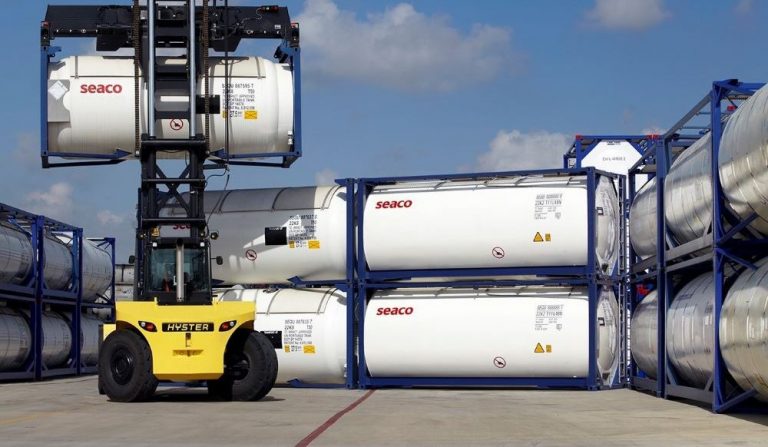The tank container market has experienced a rapid growth in terms of new container production, tank price, tank operators’ fleet size and leasing companies’ utilisation rates over the past two years. One of the key drivers for this, similar to the experience of shipping lines during the Covid pandemic period, was the disruption to the world’s logistics system – shippers and operators needed more tanks to keep their logistic flows moving.
For Seaco, one of the largest tank container leasing companies in the world, those days are now well behind us. “We started to witness a slow-down trend mainly in Europe when the energy crisis started to significantly impact the chemical and refinery sectors in the region,” says Trever Brooks, vice-president, Reefers & Tanks, at Seaco. “This has been affecting all layers in this industry – shippers, tank operators, leasing companies, and even tank manufacturers, and yet the tank operators are suffering more pressure because they needed to take far more tanks into their fleets to deal with the pandemic-induced supply chain disruption. It is then a natural progression to see more idle tanks in depots (not only in Europe), more off-hires into leasing fleets, and less movement, which has been more obvious since the beginning of 2023.”
With lower leasing demand, leasing companies’ utilisation rates started to fall while depot inventory started to increase, which squeezed depot capacity further. “In our observation, Europe is facing more serious challenges than other regions,” Brooks says. “In Asia, the inventory is at a healthier level relatively speaking, but the pressure comes more from the increasing land and labour costs.”
BACK TO NORMAL
It is a systematic challenge indeed, but Seaco does not really see it as an industrial retrogress, but more as a process of normalisation after the recent unusual market conditions, and one that will take some time – but not too long – to unwind.
During such a downward trend, Seaco has been providing various solutions and proposals to its customers, facilitating their various requests that make better financial sense to them. “We’ve managed to maintain a high utilisation rate by renewing contracts with most of our customers, and we’ve been proactively finding repositioning on a cost-effective basis to balance our inventory at each location,” Brooks adds.
On the supply side, Seaco has been working closely with its vendor partners, including both tank manufacturers and tank depots around the world. “For years we’ve been devoted to improving our criteria of selecting and prioritising those vendors who can deliver more environmental responsibility – for instance, the disposal of cleaning wastes is a crucial factor. And we also keep our eyes on the development of technologies in manufacturing as well as depot operation (such as automated cleaning systems) for higher productivity,” Brooks says.
Seaco is the third largest lessor of tank containers, with around 42,000 units in its fleet; it is a subsidiary of China-based Bohai Leasing. Its range of tank containers includes standard and baffled units, swap tanks, T50 and T75 tanks for gases, T20 and T22 tanks for high-hazard products, and bulk powder tanks. It also leases dry freight, refrigerated and specialised containers.


